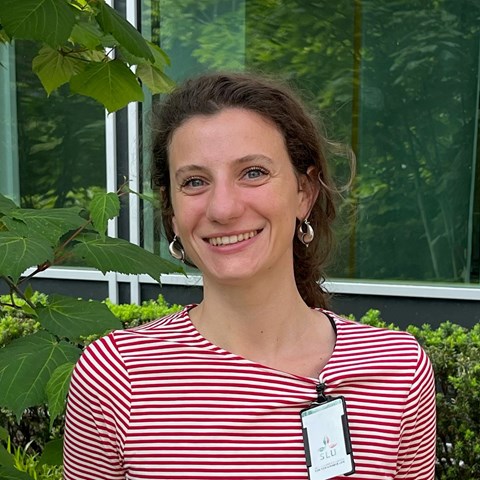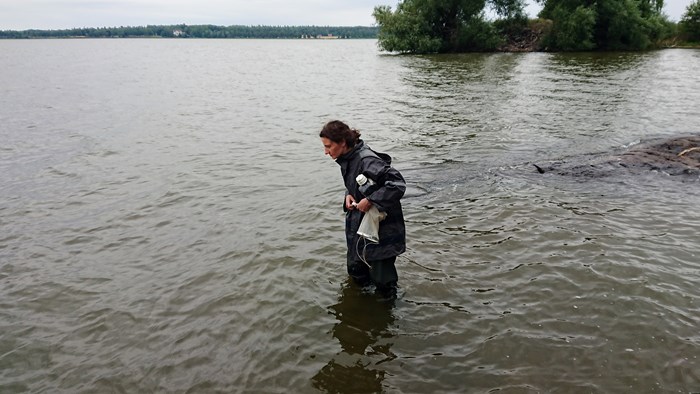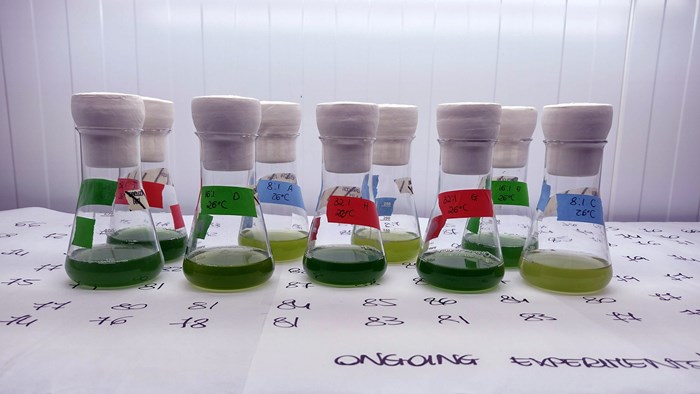The number of invasive species will most likely increase in the future due to, for example, climate-related changes in the environment, human activities, and a lack of targeted environmental monitoring. Invasive aquatic species are often spread from one waterbody to another through mainly human activities. They can also be spread by migratory birds or wind. In order to prevent further spread, detailed knowledge of the specific invasive species and its habitats is required.
The cyanobacterium that Carlotta Meriggi focused on in her doctoral project is Raphidiopsis raciborskii, a species of tropical origin that is now found almost all over the world. It was first discovered in a lake in Indonesia, but has since been found in many climate zones, although it is not yet found in Scandinavia. In her doctoral project, Carlotta has done laboratory experiments to understand how cyanobacteria respond to a new habitat.
- We see that due to its high adaptability, the cyanobacterium, once established, can potentially out-compete native phytoplankton. Although this bacterium actually thrives in warm water, it can adapt and even survive the winter by forming special resting cells that are very resistant to adverse conditions, says Carlotta.
One problem with the spread of non-native species is that they affect ecosystems once they become invasive. The cyanobacterium has already caused deterioration of water quality in many countries worldwide. A particular problem with this cyanobacterium is that it can produce poisonous substances so-called cyanotoxins. The production of cyanotoxins could potentially affect the native aquatic food web in lakes and, for example, inhibit the growth of other phytoplankton species and grazers. In Europe, there are no examples of the cyanobacterium Raphidiopsis raciborskii forming toxins that are dangerous to humans, although toxin strains occur elsewhere in the world.
Swedish areas with suitable habitats for this invasive cyanobacteria
Sweden is a country with many lakes, which makes it even more important to be able to predict the potential spread of this aquatic cyanobacterium. Carlotta has worked with a model (so-called Species Distribution Model, SDM) which shows that there are particularly favorable habitats in the south-eastern parts of Sweden for this invasive cyanobacterium.
- I have analysed samples, from a large publicly available DNA-database and my own field samples taken in Swedish lakes, says Carlotta. We haven’t detected any presence of the species in Sweden, which is good! However, evidence points to the importance to continue sampling freshwaters and monitoring areas with a potentially high risk of invasion, says Carlotta.
Modeling and environmental monitoring can predict and mitigate further invasion
Although models cannot predict with absolute certainty where a species can establish itself, they are valuable tools to determine which environments are at high risk of being affected and where environmental monitoring should focus to detect invasive species at an early stage. Knowing this, an important proactive measure is public awareness campaigns. The information shouldn’t only demonstrate the problematic nature of invasive species, but also how to reduce the risk of unintentional spread of the species, e.g. by washing swimwear, fishing gear, and boats between uses in several lakes.
- If an invasive species is detected early, it is possible that minor management measures could help to prevent further spread. There is much that society and we as citizens can do, Carlotta concludes.


